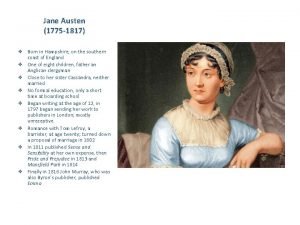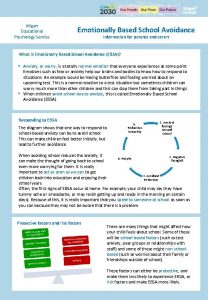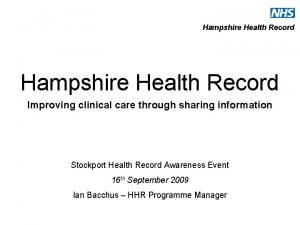Keene State College New Hampshire Marj Droppa Ph


































- Slides: 34

Keene State College – New Hampshire Marj Droppa, Ph. D Dick Jardine, Ph. D Investigating Wellness Status & GPA among Two First-Year Cohorts ACHA Annual Conference 2013

Session Objectives Objective 1 Relationship between wellness & academics Objective 2 Impact of risky health behavior on success of first-year cohorts Objective 3 Using research to keep our first-years in school

Objective 1 Relationship between Wellness and Academic Performance

The Cost of Dropout 1/3 don’t return First-year students $3. 8 billion income $566 million federal taxes $164 million state taxes

Cost to the student Earnings 22 -50% Dropout Lifespan 5 years Debt

Health-related Academic Impediments 1. Stress – 29% 2. Sleep – 20% 3. Anxiety – 19% 4. Cold/flu – 14% 7. Depression – 11. 3%

4 -year study � 2 first-year cohorts �Entry – Graduation �Race/ethnicity

College Population is Unique By 2017: 20 million college students First generation Female Black, Hispanic, Asian Veterans Disabilities

COLLEGE WELLNESS SURVEY Sexual Wellness Emotional Wellness Physical Wellness Drug/Alcohol Wellness

Student Scores Overall Wellness Score in each Wellness Dimension Drugs/Alcohol Sexual Wellness Emotional Wellness Physical Wellness

Health-Academic Relationship GPA Success Higher Wellness

Break time!

Objective 2 Impact of risky health behavior on first-year academic performance

Institution comparison – Respondent racial composition KSC First Year White Hispanic Multiracial Native American Asian Black Other

Respondent gender 100% 90% Percentage of students 80% 70% 60% male 50% 40% 30% 20% 10% 0% KSC 1 st KSC 2 nd TAMU 1 st TAMU 2 nd female

Difference in GPA from first-second year was not significant

MEAN WELLNESS SCORE 81% 80% 79% 78% KSC 1 st KSC 2 nd TAMU 1 st TAMU 2 nd Sophomores at KSC were less well than in their 1 st year

Significance testing of difference in mean wellness scores Hypothesis test results: μ 1 k : mean of KSC 1 st μ 2 k : mean of KSC 2 nd μ 1 k - μ 2 k : mean difference H 0 : μ 1 k - μ 2 k = 0 HA : μ 1 k - μ 2 k ≠ 0 Hypothesis test results: μ 1 T : mean of TAMU 1 st μ 2 T : mean of TAMU 2 nd μ 1 T - μ 2 T : mean difference H 0 : μ 1 T - μ 2 T = 0 HA : μ 1 T - μ 2 T ≠ 0 Difference Sample Mean Std. Err. DF T-Stat P-value μ 1 K - μ 2 K 0. 0175 0. 0081 318. 89 2. 160 0. 0314 μ 1 T - μ 2 T -0. 0019 0. 0084 508. 35 -0. 225 0. 822 CONCLUSION: KSC students’ wellness score worsened from first to the second year, and the difference is statistically significant. CAVEAT: Data distribution skewed, not a probability sample, groups not independent

Numerical summary of Wellness Survey scores Wellness score mean standard deviation KSC 1 st 0. 804 0. 090 KSC 2 nd 0. 787 0. 103 TAMU 1 st 0. 793 0. 102 TAMU 2 nd 0. 797 0. 089 65. 7 50. 9 23. 3 33. 9 64. 5 49. 1 22. 5 33. 8 66. 7 51 21. 7 33. 3 66. 7 51. 4 21. 2 34 Dimension subscore (mean ) D&A Sexual Physical Emotional • KSC students’ wellness scores dropped across all dimensions • Which wellness dimension had significant effect on GPA?

Logistic Regression Analysis � Logistic regression analyzes relationships between dichotomous response variable (e. g. , higher and lower GPA) and categorical or quantitative explanatory variables (e. g. , Wellness Score) � Combines the explanatory variables to determine the probability that the response variable would occur � Logistic regression requires no assumptions of normality or of similar variability in the explanatory variables � Applied Logistic Analysis Hosmer, Lemeshow and Sturdivant

Logistic Regression Analysis � Logistic regression results Dependent Variable: High GPA Independent Variable(s): Weighted Wellness Score Parameter estimates Variable Estimate Std. Err. Zstat P-value Intercept -4. 438 1. 459 -3. 042 0. 0023 Wellness Score 0. 020 0. 0083 2. 423 0. 0151 Odds Ratio 1. 020

Logistic Regression Analysis �

Logistic Regression Analysis �Conclusion: Student GPA performance most significantly influenced by their propensity to smoke cigarettes.

TAMU-CC Cohort Demographics, GPA, and Wellness

TAMU-CC Demographic Statistics % High GPA Mean Weighted Wellness Score Female (n = 151) 49. 7% 0. 79 Male (n = 73) 38. 4% 0. 82 � While women claimed to have higher GPA, their wellness score was lower than their male counterparts

TAMU-CC Demographic Statistics race Asian Biracial Black Hispanic Multiracial White n 12 11 18 89 11 94 % High GPA 75. 0% 36. 4% 44. 4% 43. 8% 81. 8% 45. 7% Mean Weighted Wellness Score 0. 85 0. 80 0. 79 0. 83 0. 79 Students who reported as Asian or multiracial had higher Wellness scores and reported higher GPA � If resource constrained, intervention should be targeted on the Hispanic and White student groups �

Objective 3 Using research to keep our first-year students in school

Poster Activity Questions SOPHOMORES Freshmen programming focus? If use our analysis, what would you have to change on your campus? Please share Drugs & Alcohol Smokers

What is Next � 2 more years of First-Year Cohorts study �New Wellness Survey �New Collaborations

The Future



Would you like to collaborate? Marj Droppa, Ph. D Keene State College, New Hampshire Email: mdroppa@keene. edu

Questions
 New hampshire state budget
New hampshire state budget Characteristics of the articles of confederation
Characteristics of the articles of confederation Neil thisse is a loyalist who fled the colonies
Neil thisse is a loyalist who fled the colonies Hampshire college
Hampshire college Work ready nh
Work ready nh Facsimiles ltd nashua new hampshire
Facsimiles ltd nashua new hampshire New hampshire lobbying
New hampshire lobbying New hampshire coastline length
New hampshire coastline length New hampshire department of administrative services
New hampshire department of administrative services Pratt and whitney new hampshire
Pratt and whitney new hampshire Agnes keene
Agnes keene The hard way out by terry vaughn genre and subgenre
The hard way out by terry vaughn genre and subgenre Kurt keene
Kurt keene Dominic ruck keene
Dominic ruck keene Milesseo.com
Milesseo.com Keene.instructure
Keene.instructure Unusual options activity
Unusual options activity Jeffrey keene reincarnation
Jeffrey keene reincarnation Bagley-keene open meeting act
Bagley-keene open meeting act Kameroen schaap karakter
Kameroen schaap karakter Learning zone hampshire
Learning zone hampshire Hampshire services for young children
Hampshire services for young children Hampshire astronomical group
Hampshire astronomical group West hampshire pes referral hub
West hampshire pes referral hub Hampshire duroc yorkshire
Hampshire duroc yorkshire Hampshire rugby union
Hampshire rugby union North east hampshire and farnham ccg
North east hampshire and farnham ccg 1817 hampshire drive
1817 hampshire drive Hampshire community bank
Hampshire community bank Emotionally based school avoidance
Emotionally based school avoidance Rick riordan hampshire book award
Rick riordan hampshire book award Ruth milton phe
Ruth milton phe Hampshire pension services
Hampshire pension services Hampshire health record
Hampshire health record Hampshire characteristics
Hampshire characteristics
























































